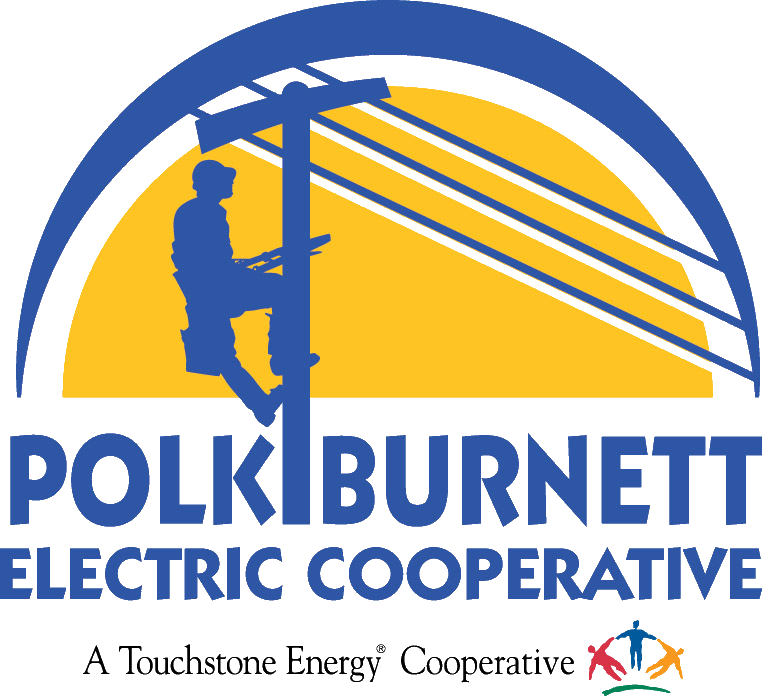Guide to the electric grid, the world's most complex machine
 by General Manager Steve Stroshane
by General Manager Steve Stroshane
Electricity plays an essential role in everyday life. We depend on it to keep us warm in the winter (and cool in the summer), charge our phones and binge our favorite TV shows. If the power goes out, even briefly, our lives can be disrupted.
The system that delivers our electricity is often described as the most complex machine in the world, and it’s known as the electric grid. As an engineer and general manager for our local electric co-op, I’m fascinated by how it works! It’s a privilege to help design and operate this complex machine we all depend on.
What makes it so complex? We all use different amounts of electricity throughout the day, so the supply and demand for electricity is constantly changing. For example, we typically use more electricity in the mornings when we’re starting our day, and in the evenings when we’re cooking dinner and using appliances. Extreme weather and other factors also impact how much electricity we need.
The challenge for electric providers is to plan for, produce and purchase enough electricity so it’s available exactly when we need it. Too much or too little electricity in one place can cause problems. So, to make sure the whole system stays balanced, the electric grid must adjust in real time to changes and unforeseen events.
At its core, the electric grid is a network of power lines, transformers, substations and other infrastructure that span the entire country. But it’s not just a singular system. It’s divided into three major interconnected grids: the Eastern Interconnection, the Western Interconnection and the Electric Reliability Council of Texas. These grids operate independently, but are linked to allow electricity to be transferred between regions when backup is required.
Within the three regions, seven balancing authorities known as independent system operators (ISOs) or regional transmission organizations (RTOs) monitor the grid, signaling to power plants when more electricity is needed to maintain a balanced electrical flow. ISOs and RTOs are like traffic controllers for electricity.
Polk-Burnett Electric Cooperative is part of MISO, the Midcontinent Independent System Operator. MISO manages the flow of high-voltage electricity across 15 states and the Canadian province of Manitoba (the dark red area). Forty-five million people, including the members of Polk-Burnett, depend on MISO to generate and transmit the right amount of electricity every minute of every day.
The journey of electricity begins at power plants
Power plants can be thought of as factories that make electricity using various energy sources, like natural gas, solar, wind and nuclear energy. Across the U.S., more than 11,000 power plants deliver electricity to the grid.
You may not realize it, but Polk-Burnett does not generate power. Except for two local solar arrays, we purchase the bulk of our power from our generation and transmission (G&T) partner, Dairyland Power Cooperative. Dairyland keeps generation resources available for peak performance in all weather conditions to ensure a constant supply of safe, reliable electricity.
To get the electricity from power plants to you, we need a transportation system. High-voltage transmission lines act as the highways for electricity, transporting power over long distances. These lines are supported by massive towers and travel through vast landscapes, connecting power plants to electric substations. There are 15 substations in our Polk-Burnett service area. We are working with Dairyland to design and build a new Cedar Lake Substation north of Somerset. This grid modernization project will help meet our area’s growing need for energy safely and efficiently. Construction is set to begin in 2025.
Substations are like pit stops along the highway, where the voltage of electricity is adjusted. They play a crucial role in managing power flow and ensuring that electricity is safe for use in homes and businesses.
Once the electricity is reduced to the proper voltage, it travels through distribution power lines, like the ones you typically see on the side of the road. Distribution lines carry electricity from substations to homes, farms and businesses. Distribution transformers, which look like metal buckets on the tops of power poles or large green boxes on the ground, further reduce the voltage to levels suitable for household appliances and electronic devices. After traveling through transformers, electricity reaches you––to power your everyday life.
The distribution lines and transformers are owned by Polk-Burnett. We are known as an electric distribution cooperative, and our employees operate and maintain 3,510 miles of distribution power lines (1,930 miles buried underground and 1,580 miles overhead) and 16,300 transformers.
We’re proud to be your local, trusted energy provider. From the time it’s created to the time it’s used, electricity travels great distances to be available at the flip of a switch. That’s what makes the electric grid our nation’s most complex machine––and one of our greatest achievements.


